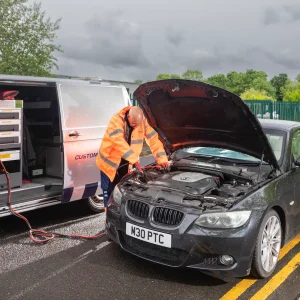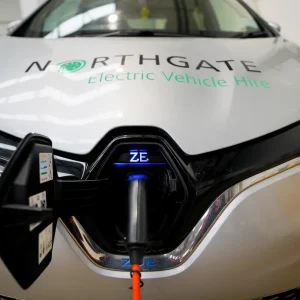Managing fleet procurement costs and methods can have a big impact on balance sheets and tax bills. Improved procurement strategies have already saved fleets thousands of pounds in recent years.
The formal tender process is still important for many organisations, and mandatory for some. So whether you are looking to upgrade the quality of your fleet or to increase its size, developing a proper procurement strategy will greatly benefit you in the long run, but where to start with creating this strategy is not always obvious.
To help you take the right steps towards a successful procurement, here are five top tips:
1. Know why you’re tendering
It might be an obvious one, but knowing why your company needs to go out to tender in the first place is a vital starting point. “There are many things involved in the tendering process, but first you need to work out why tendering is going to be helpful for your company,” explains Norman Harding, corporate fleet manager at the London Borough of Hackney.
“You need to know why you are tendering, as in what problems you are trying to fix.”
Caroline Sandall, deputy chair of fleet operator organisation ACFO agrees. “You need to know why you are tendering, as in what problems you are trying to fix. This will ensure you get the best possible outcome from the tendering process,” she says.
2. Do your research
How much research should you do before going out to tender? “The simple answer is lots,” says Harding. In fact, to get the best value for money, you should consider everything that could impact the use of your asset. “I assess my customers’ requirements now, and potentially in the future,” Harding explains. “I look at what the market has to offer: cost, value, manufacturer and local dealer support – not just that they’re there, but how good they are at supporting you ? funding options, legal compliance issues, and local operating issues just to name a few.”
It is also vital to ensure a strong project team is in place with adequate representation from all internal parties across HR, finance, insurance, payroll and operations, says Sandall. “There should be clearly agreed roles, responsibilities, timescales and deliverables,” she explains. Also, you should spend lots of time researching the marketplace to ensure that, when the tender is issued, you already know that those invited are truly capable of delivering to your requirements.
Sandall even argues that you should consider a pre-tender phase where you spend time constructing questions, supporting schedules and carefully considering what you are trying to understand or see demonstrated. “Be clear with your questions and consider how you will score the responses. Build a scoring matrix for transparency and ease of assessment. Consider issuing a draft contract with the tender to capture any questions early on in the process,” she says.
John Webb, principal consultant at Lex Autolease, thinks it is important that buyers really understand the fleet market before going out to tender. “Remember that tenders may only be run every three to five years, or even longer, so internal expertise of the fleet category may not be strong,” he explains.
In these situations, it is wise to send out a request for information to collect written information about the capabilities of various suppliers, says Webb. “This is then used to construct a set of weighted questions to identify specific requirements. Questions need to be clear and unambiguous, so that meaningful evaluation can be made and there is genuine competition.”
Smaller businesses, which may be embarking on a tender process without a procurement specialist, could consider bringing in external support, or seeking guidance from bodies such as the Chartered Institute of Procurement and Supply to help in managing the process. “This is particularly important because achieving the optimum solution for many businesses is often a balancing act between managing the whole-life costs of the fleet and offering employees a compelling choice of vehicles,” says Webb.
3. Buy cheap, buy twice
Getting a good price is always a factor that is high up the priority list in any tender process. But Webb explains that quality is equally, if not more, important.
Webb also says that Lex, in particular, is seeing qualitative factors play a more important role. “Environmental concerns are often a key point of discussion, as well as making sure the vehicle policy is reflective of an organisation’s culture and reputation. For instance, a utilities organisation with a strong focus on sustainability is more likely to opt for a vehicle policy that offers a greater choice of electric and hybrid vehicles,” he says.
You must consider other aspects in addition to the actual product and its cost, agrees Harding. “For example, when buying tyres you could opt for the cheapest product, but it is likely to wear out quickly. However, the most expensive product may last a long time – providing it doesn’t get damaged before it wears out, or all value is lost at this point.”
Harding notes that the overall service to be delivered to the customer is also important. “So fleets should be looking for good levels of control, supported by a strong service level agreement, across all areas of the service being delivered: from quote to order and delivery, as well as in-life SMR services and accident management,” he says.
Asked if Lex would consider a higher price for better customer service, Webb replies, “A high quality of customer service should be non-negotiable. Pricing will, of course, be determined by the specific requirements of the tender. Some organisations may require a fairly straightforward contract hire, whereas others will need a fully outsourced solution. Clearly, requirements for additional processes, systems and people will incur a cost.”
4. Calculate risk
Another factor for serious consideration is the element of risk to your operations, particularly for service-related contracts. “If there is a high degree of risk ? through aspects such as safety, legal compliance, reputation ? to you, your employees or company for non-performance, then you would err on the side of choosing a higher-quality and possibly more costly tender,” says Harding.
“A high quality of customer service should be non-negotiable.”
At Lex, there is a professional bid management team, and procedures are in place to manage the whole process efficiently and effectively. “The expertise and knowledge of this team are a great support to customers throughout the tender process, providing guidance and helping to navigate any potential pitfalls,” says Webb.
5. Learn from your mistakes
A weak contract creates a weak relationship. If service is perceived to have dipped, but there are no contractual consequences, it is a difficult discussion, says Sandall. “The contract must adequately describe the full scope of services, how those services will deliver, how performance will be measured and the consequences of failure.
“It must clearly set out the circumstances under which different levels of breach might occur and what happens in such situations. It should also describe data exchange and MI, account management and operational delivery, an engagement model that covers both sides.”
A successful tender process, therefore, involves all stakeholders, from HR through to operations, includes robust research and planning ,and sets out clear roles and responsibilities.
Webb believes the process should be open and transparent: “Not only does this ensure the best possible solution is reached, but it also eliminates unnecessary delays due to confusion or misinterpretation. Putting realistic timelines in place is also important so expectations can be managed.”
A regular problem is for buyers to ask a wide range of qualitative questions, but then fail to reflect them in the evaluation, says Webb. “The cheapest option will often not deliver solutions that are fit for purpose, or meet organisational aims and objectives, and this is something a company looking to go out to tender should be fully aware of,” he concludes.





